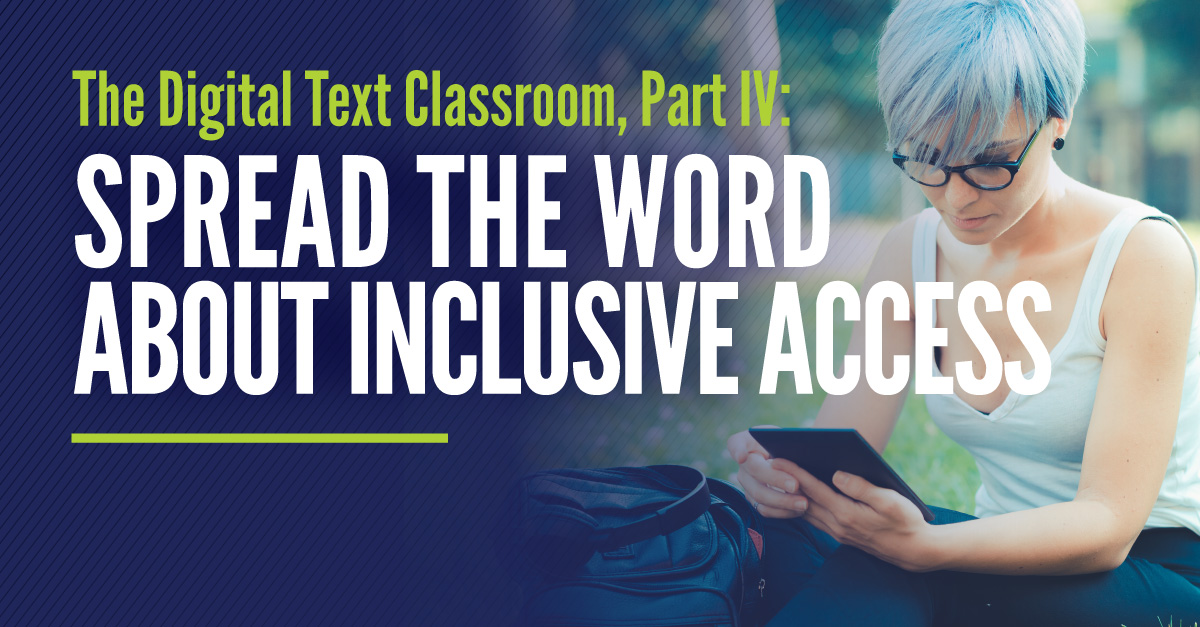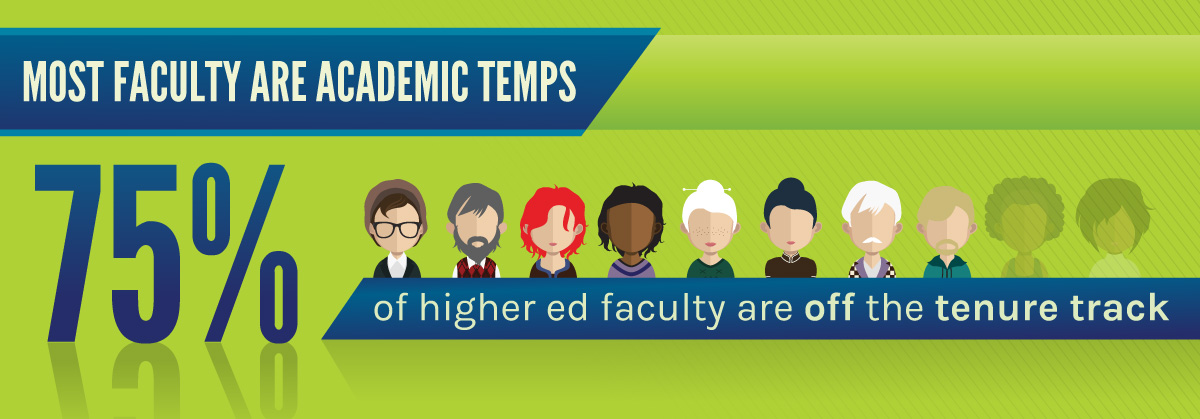I just wrapped up my first course using inclusive access, and I have a plea for collegiate retailers: Spread the word about inclusive access. If you can, you’ll have an enormous impact on student lives.
Inclusive access solves problems: it lowers course material costs, increases student preparedness — and, in my class, it inspired students to read more. When students read more, students learn more. It’s that simple.
Digital inclusive access does more than ensure students have the materials for class. It gives students access to the material wherever they go: on the bus, at home, in line at the grocery store — anywhere they have a smartphone, tablet or laptop on hand.
How the convenience of inclusive access affects student success
Convenience is especially critical for nontraditional students like those I taught most recently. I worked for a night school. Like me, most of my students had other fulltime jobs. They were rarely on campus, and their budgets were tight.
Adult realities can create challenges when it comes to planning an effective curriculum. You must accept that you’ll rarely have an entire class present at once. Students often miss class, because life gets in the way. A boss forces them to work a double shift and they haven’t slept in 48 hours. A child is sick. A parent is in the ER.
Even so, in my 20 years of teaching, I’ve never had so many students prepared at the start of class. Beyond that, I’ve rarely had so many first-year students complete their reading assignments. I didn’t have to coax, cajole or strategize about how to inspire the students to read a set of required books. They just did it. Our class discussions were lively. Most students passed their reading quizzes with flying colors.
Best of all, the majority finished the class as stronger writers than they were when they started. It’s hard to think of an outcome more pleasing to most teachers. Inclusive access isn’t the only reason the course went well. But it played an enormous role. When students can’t afford their books, they can’t read their books. When they don’t read, they don’t learn — especially in a class devoted to literature and writing.
Go beyond faculty to promote inclusive access
It would be great if you could go straight to faculty with the news about inclusive access. But I recommend aiming higher: talk to department chairs, deans, provosts, chancellors — anyone with power who will listen. That’s not because faculty aren’t interested in reducing student costs. Nor is it because they’re averse to trying out new technology.
According to Inside Higher Education, 40 percent of faculty said they believe inclusive access programs lower costs and increase student success. What’s more, 30 percent of faculty consider themselves early adopters. They love to try out new tech.
Nevertheless, inclusive access programs are unlikely to take off without intervention from nonfaculty.
Here’s why: Most colleges and universities depend on non-tenure track teaching labor for survival. Adjuncts greatly outnumber full-timers. Over 75 percent of higher education faculty are “off the tenure track,” according to Inside Higher Education.
I’ve been a member of higher education’s enormous pool of temporary teaching labor since 2001. I’ve worked for outstanding state schools, idyllic private liberal arts schools, experimental urban schools, nontraditional night schools, community colleges and HSBCs. I’ve taught full and part-time and held a variety of titles: TA, lecturer, instructor, adjunct, etc. But not once in 17 years did I hear a colleague, department chair or administrator say anything like this: Hey, there are excellent books out there that don’t cost students as much. Have you talked to anyone at the bookstore?
The reality is that higher education works in a way that accidentally leaves the bulk of its teaching force out of the loop. Department chairs take steps to integrate adjuncts. But, most of the time, we’re not in the know. We’re not on committees. We sometimes have offices. We rarely mingle with tenured professors.
As a result, we’re unaware of even the easiest ways to save students money. Unfortunately, that ignorance drives up student costs. As a recent study from Barnes & Noble College suggests, the lack of awareness about how to reduce course material costs has a negative impact on student equity. The students who can afford their books have a much better chance at success than those who can’t.
Even if everyone on campus had heard about inclusive access, temporary teachers would have no idea how to begin launching such a program. Most wouldn’t have the power either.
It’s not fair to task collegiate retailers with the burden of promoting inclusive access. In a perfect world, teachers would know about such programs. They would put together a call to action on behalf of their students.
But educating administrators about the advantages of these programs can make a huge difference. In academia, more than any other industry, knowledge is power.








